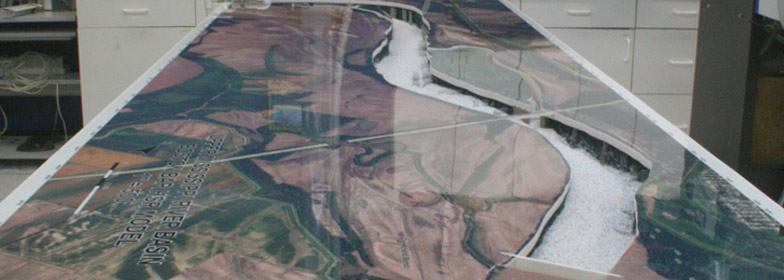HSR Modeling
The USACE has employed Hydraulic Sediment Response (HSR) modeling, formerly called Micro Modeling (Davinroy, 1994, Gaines 2002) since 1994 to address a variety of problems related to shoaling and scour on inland waterways in the United States (Davinroy 1999). Modeled waterways include the Mississippi, Atchafalaya, White, Missouri, Ohio, Brazos, and Kaskaskia Rivers. The small-scale physical models use synthetic bed material to simulate bed response, and use various materials to represent fixed boundary features such asbanks, islands, dike structures, rock, and consolidated clay formations. Design alternatives have been developed from model output to solve problems such as repetitive maintenance dredging, side channel restoration, and other navigation related issues. HSR models replace the use of large scale coal bed models. The models examine sediment response in localized river reaches with fixed or minimal eroding banklines
The St. Louis District Applied River Engineering Center uses table-top "micro-models" to develop innovative solutions to various sedimentation problems. More often than not, these solutions are found in what we call "regulating works". Regulating works are structural designs, such as chevron dikes, bendway weirs, off-bankline revetments, and notched dikes. By necessity, our river engineers seeks to implement structural designs that work in harmony with the natural laws of the river to solve problems involving sedimentation, erosion and biological diversity, all while providing a safe and dependable navigation channel.

